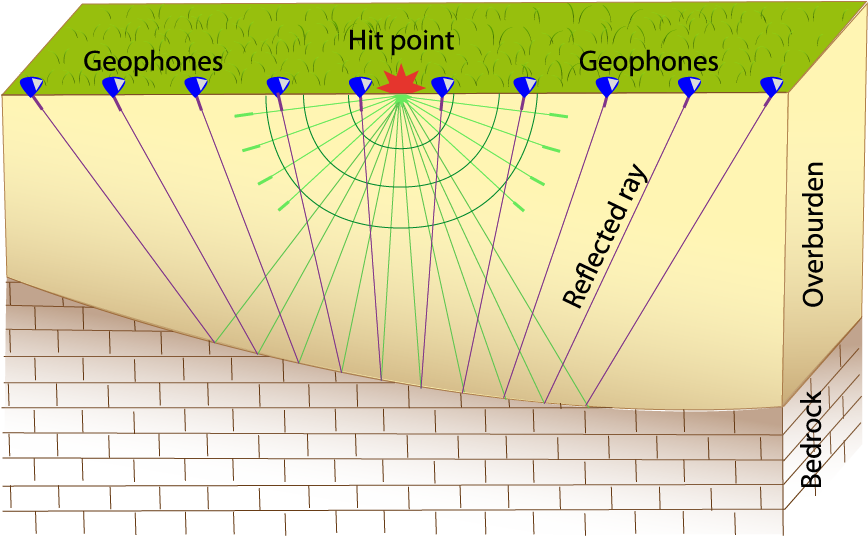SEISMIC REFRACTION
The propagation speed of the seismic waves on the ground is different for every and each kind of material whatever its density is. The refraction prospection technique allows to determine the depth and tilt of the different layers that are overlapped and discriminate the riverbed.
The undersoil seismic prospection method is based on the measure of the waves generated in the ground arrivals by a source of accurate mechanic energy (manual hammer, impact generator, etc.) that are transmitted from a determined point to a distant other in which corresponding sensors are installed ( geophones) connected to the registration seismograph.
With the wave propagation speed in the ground we can deduce a series of characteristics such as modulus of elasticity of formation, ripability, soil loosening or settling degree, as well as other properties which may be interesting for civil engineers.
Through reflection techniques it is possible to determine the undersoil characteristics, measuring the generated on surface and reflected by terrain breakaway waves’ return time.
The undersoil seismic prospection method is based on the measure of the waves generated in the ground arrivals by a source of accurate mechanic energy (manual hammer, impact generator, etc.) that are transmitted from a determined point to a distant other in which corresponding sensors are installed ( geophones) connected to the registration seismograph.
With the wave propagation speed in the ground we can deduce a series of characteristics such as modulus of elasticity of formation, ripability, soil loosening or settling degree, as well as other properties which may be interesting for civil engineers.
Through reflection techniques it is possible to determine the undersoil characteristics, measuring the generated on surface and reflected by terrain breakaway waves’ return time.

MAIN APPLICATIONS
- Geotechnicalstudies
- Geologicinvestigation
- Rock ripability studies
- Propagation speed measure
- Quarries and mining explotations to sand and gravel, etc.
- Civil engineering, tunnels, foundations
Geofísica Argentina © - 2015 - (All rights reserved)
Address: Bº UDAP II Mna F C17 - Rivadavia - San Juan - Argentina
Phone numbers:
+54 9 264 4854870 - +54 9 264 5883048 - +54 9 264 5318547
E-mail: info@geofisicaargentina.com
Address: Bº UDAP II Mna F C17 - Rivadavia - San Juan - Argentina
Phone numbers:
+54 9 264 4854870 - +54 9 264 5883048 - +54 9 264 5318547
E-mail: info@geofisicaargentina.com
Web design: Pica Estudio




